
Why Simplicity Matters in WOTC
The importance of incorporating a WOTC survey into the hiring process to offset hiring costs without affecting the candidate experience.
Avionté recently concluded its 14th annual CONNECT user conference at the InterContinental Saint Paul Riverfront Hotel in downtown Saint Paul, Minnesota. Drawing in over 650 attendees, including customers, associates, partners, and industry experts, the conference was more than a run-of-the-mill tech gathering. While the event did indeed offer insights into the products and solutions poised to revolutionize the industry, it also went a step further, inviting its audience to envision a new future of recruitment and technology. This future embodies Avionté’s vision of achieving genuine “Frictionless Staffing: From Employer to Talent and Back.”
Moving beyond discussions on product enhancements and software functionalities, the conference invited its attendees to explore a more comprehensive vision of staffing and technology, where technology is integrated into every facet of the recruitment process. Event participants were treated to sessions that dived deep into topics such as Mobile Talent Enablement, Sales & Marketing Best Practices, Artificial Intelligence, M&A Strategies, and the adoption of Vendor Management Systems (VMS) specifically designed to oversee a contingent workforce.
Alongside these strategic conversations, Avionté also curated two unique design sprint sessions, providing a select, dedicated audience of staffing professionals and product enthusiasts a sneak peek into Avionté’s latest software design ethos: “Designing with the End-User in Mind.” This approach is more than a pledge; it is a tangible commitment to weaving user needs into every aspect of our solutions, aligning with Avionté’s overarching vision of crafting a more fluid staffing experience that seamlessly supports every dimension of the recruiter, talent, and employer journey.
These mini blue-sky design sprint sessions were led by Jason Hilton, Avionté’s Director of UX. The promise was intriguing: participants had the rare opportunity to become part of Avionté’s product design team for an hour, working alongside industry experts to delve into the intricacies of what it takes to design either a Vendor Management System (VMS) tailored to the unique requirements of staffing professionals or a seamless mobile experience for recruiters.
At the heart of these design sprints was the concept of a “design-driven approach,” where the end user’s needs and desires serve as the foundation for product creation. This approach sharply contrasts with a more traditional method of designing products based solely on specific functional requirements. Instead, Avionté flipped the script, encouraging participants to imagine the final destination – what makes for an ideal VMS for staffing or recruiter mobile app – and then work backward to map out the journey.
When you’re design-driven, you’re not fixated on your limitations; you’re always envisioning the realm of possibilities – and then you work backwards. Our goal is to develop products with the end in mind. The excitement lies in that final vision, and our intention is to craft products with that ultimate goal, where all components collaborate harmoniously for improved speed, efficiency, and effectiveness.
Jason HiltonDirector of UX, Avionté
The initial session focused on creating an optimal interface between an employer’s Vendor Management System (VMS) and the ATS/staffing software used by a staffing agency to manage their business. The session started with a simple question – “Are you happy with the VMS systems you’re currently working with?” The overwhelming response was a clear no!
Attendees were asked to envision, not what they do today, but what they truly need in an ideal world and how that experience might look. They then captured their suggestions on everyone’s favorite low-tech solution, post-it notes. This approach, which allowed participants to design with the end in mind, led to a flurry of new design concepts. Within minutes, the participants covered the table with their post-it ideas.
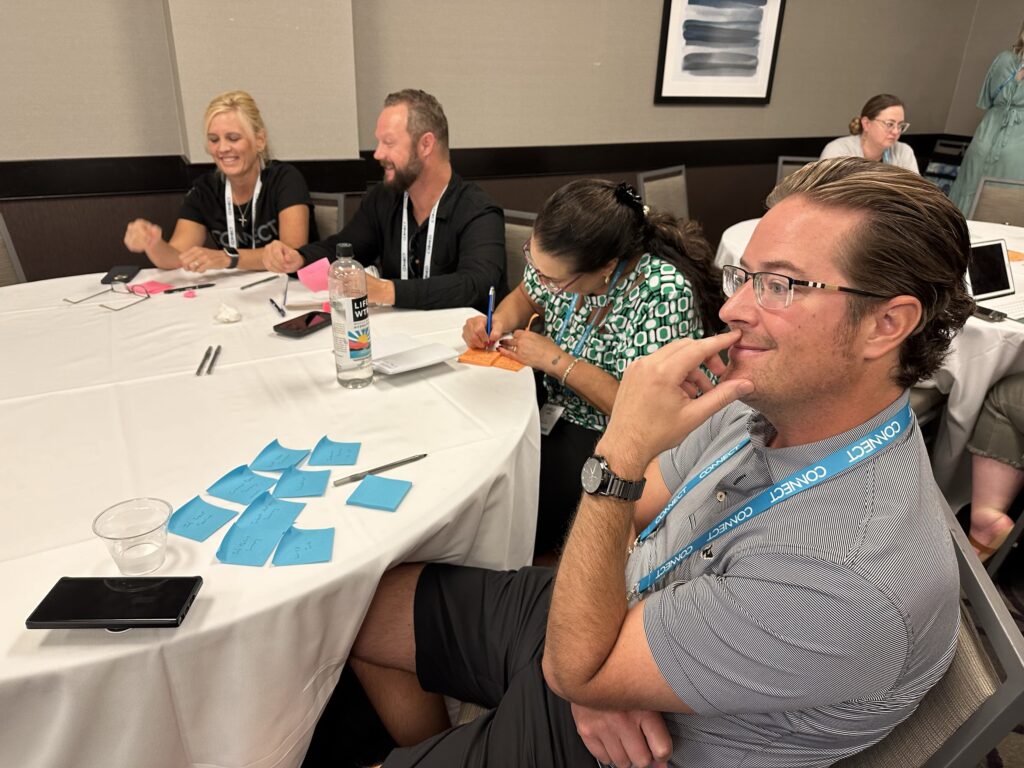
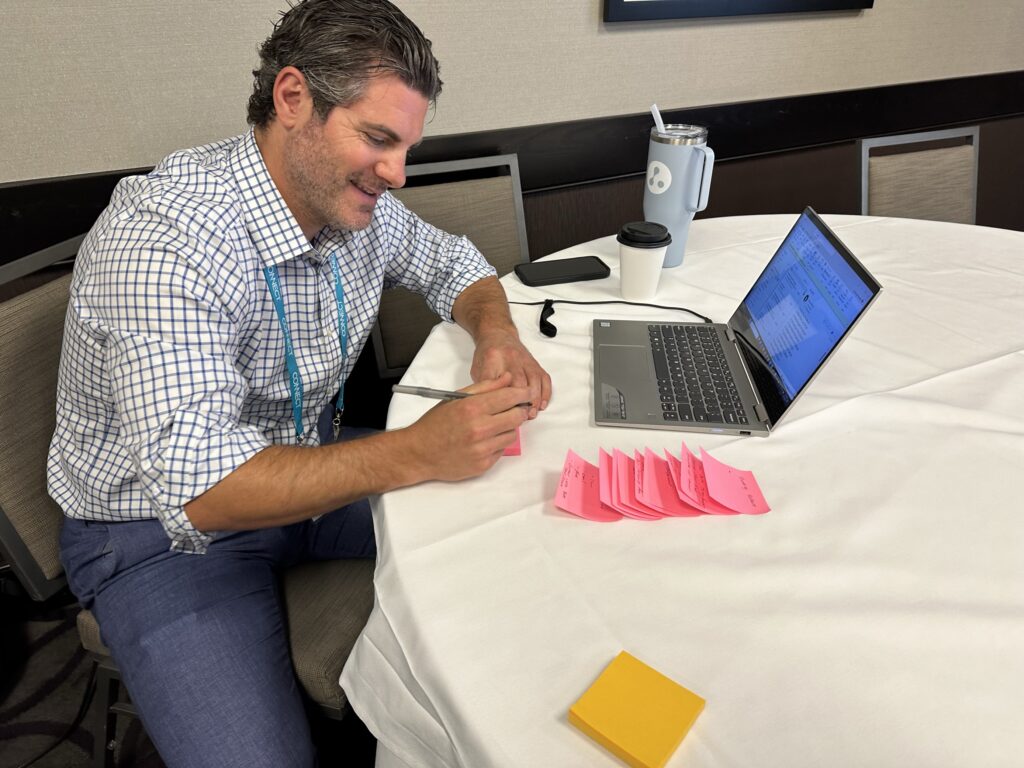
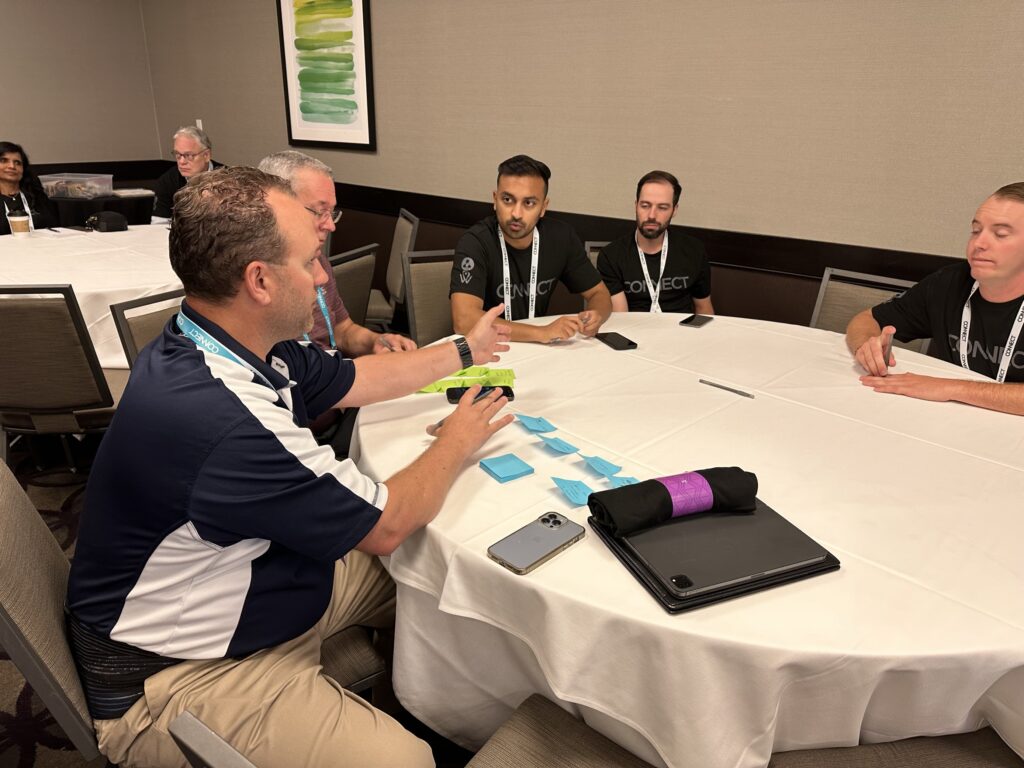
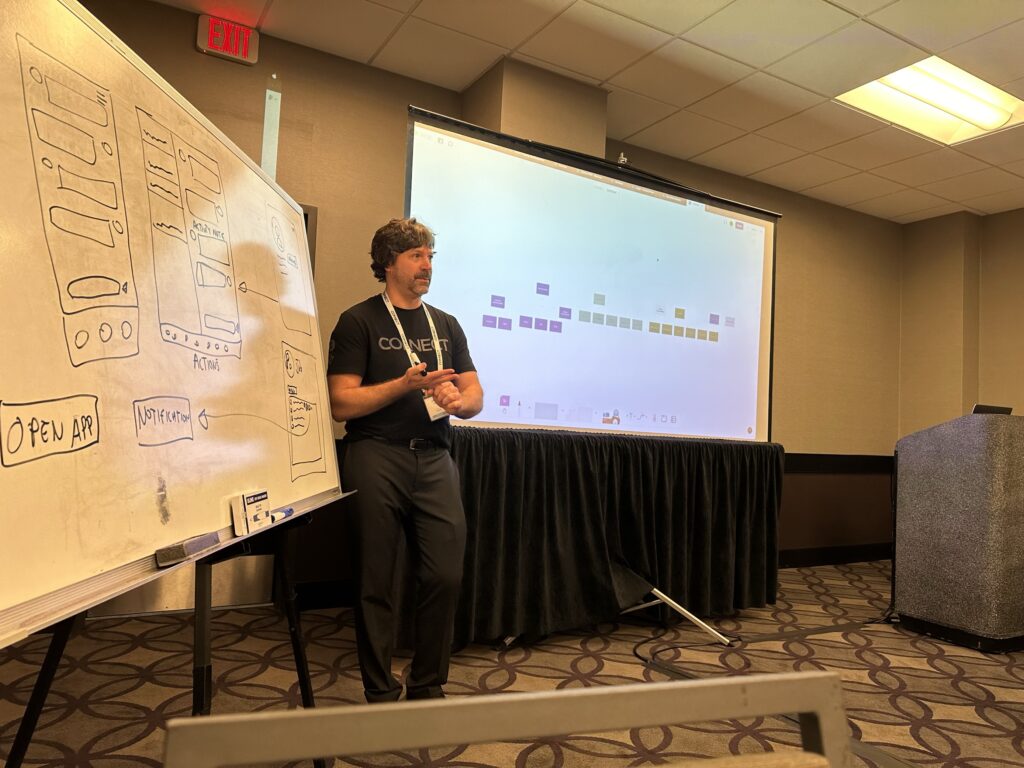
Afterwards, these varied concepts, addressing different staffing challenges, were then categorized into overarching topics, like billing and notifications. This organization prompted a closer look at a theme considered essential by nearly everyone in the audience—the candidate placement process.
Jason responded by whiteboarding an optimized product flow for placement. This plan, shaped by ongoing audience input, highlighted its components, aiming to create a more satisfying user experience. And this collaborative approach will continue beyond the session as the UX team plans to refine the design and present it after CONNECT. Afterward, attendees will supply feedback on a clickable prototype, driving an iterative design process that showcases Avionté’s dedication to customer collaboration.
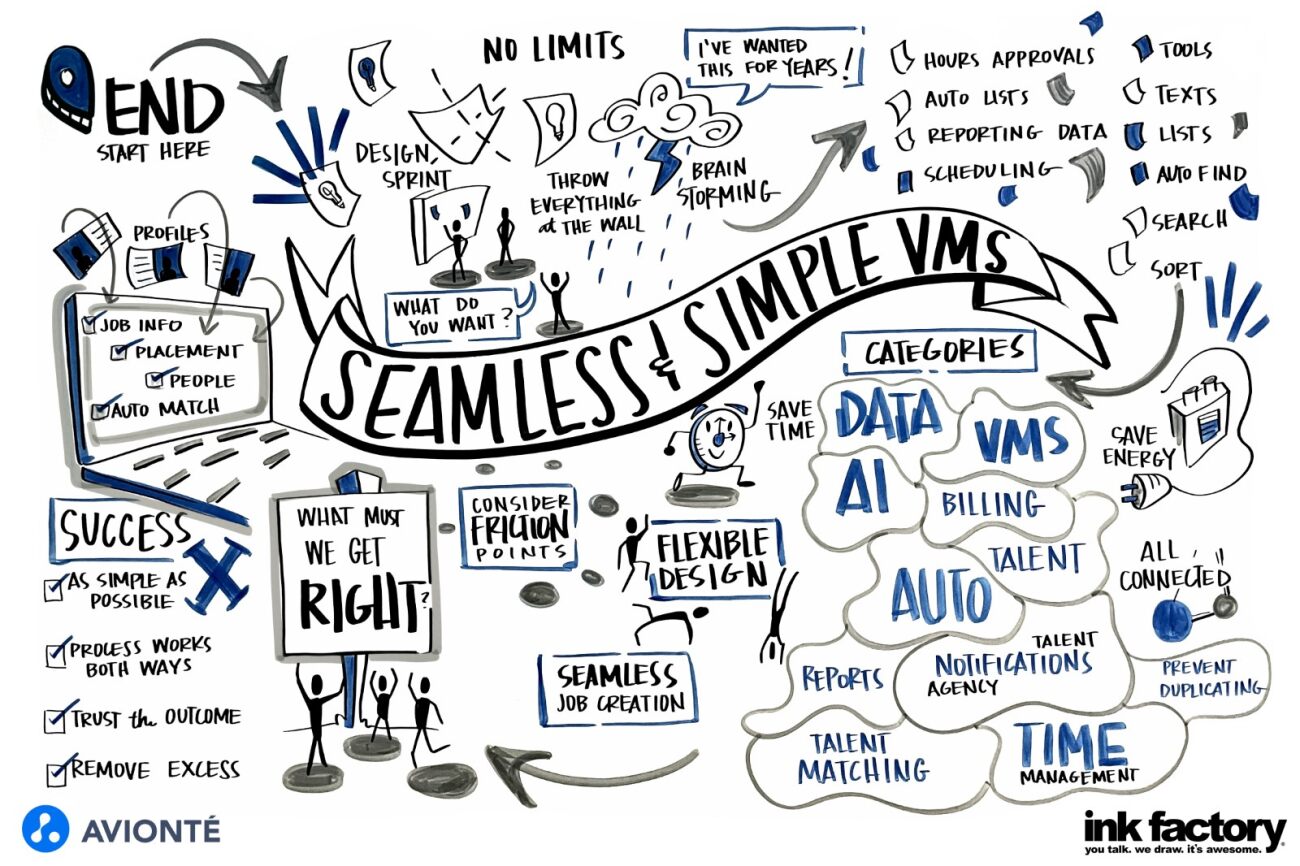
The second design sprint session followed a similar format, but this time focused on another unique design possibility: creating a mobile recruiter app. Given that this type of application wasn’t yet on any product roadmap, participants were excited by the rare opportunity to envision a product from scratch and contribute their ideas to its creation.
The session started with a key question: What’s an ideal mobile recruiter experience, and should Avionté tackle it? This prompted participants to envision a mobile tool without limitations specifically designed to enhance a recruiters’ workflow.
Participants were again asked to use post-it notes to suggest feature ideas. As with the earlier session, the audience displayed immediate engagement and enthusiasm with some contributing almost 20 ideas within minutes. And just like in the previous session, the audience was then asked to help sort these ideas into themes or workflow categories. These themes encompassed preferred communication modes (text, email, phone), notifications about new applicants and uploaded documents, pipeline tracking, job specifics, attendance and timekeeping, and applicant verification.
Amidst this multitude of ideas, a significant theme emerged that particularly resonated with participants, centered around crafting a seamless messaging and communication interface tailored for recruiters. Guided by this principle, Jason transitioned into the next phase of the design sprint, adeptly sketching out the blueprint for what could potentially evolve into an exemplary messaging and communication mobile interface for recruiters.
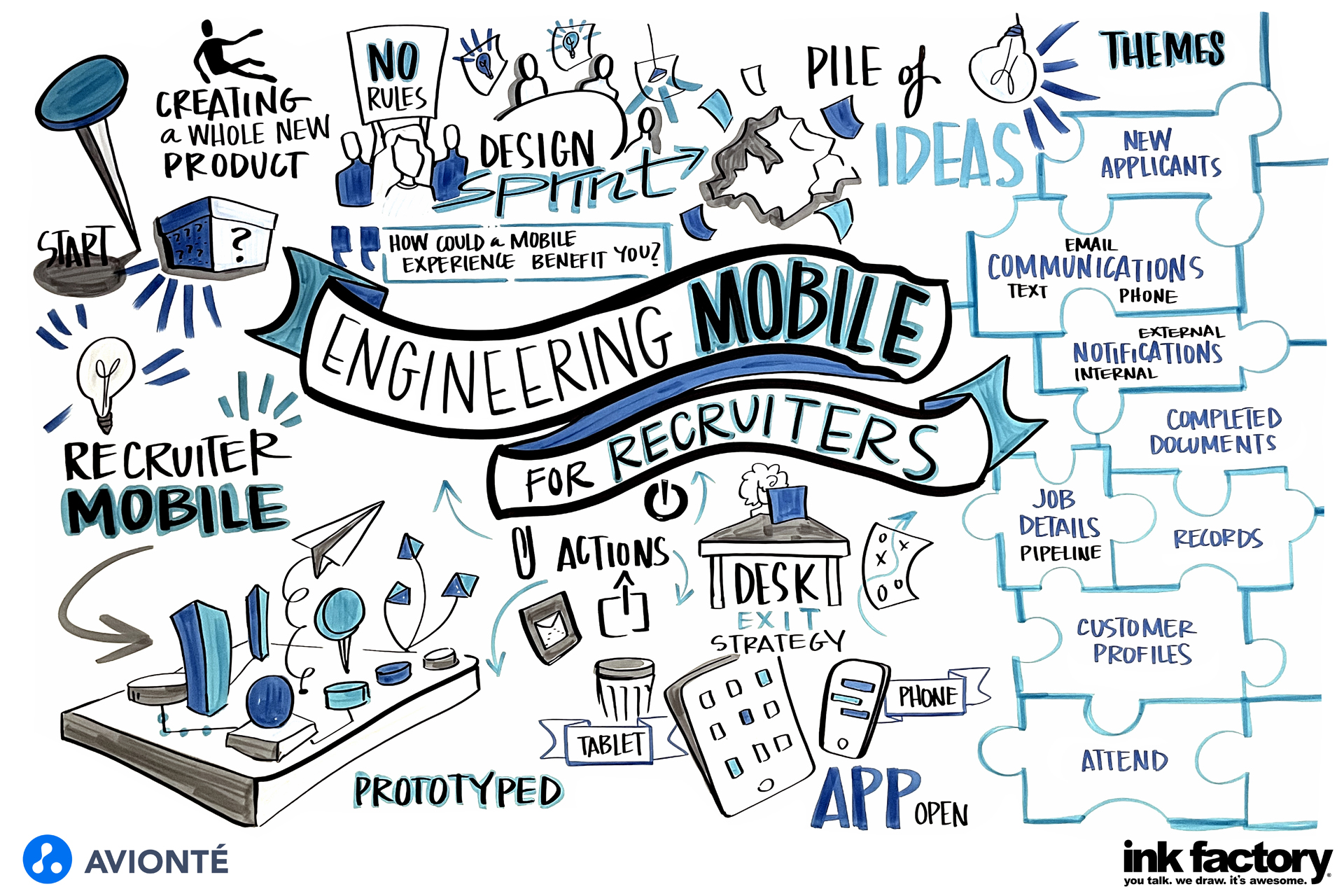
These two sessions highlighted Avionté’s evolving approach to product design. Beyond the simplicity and fun associated with an interactive design process, these sessions were a strategic demonstration of Avionté’s commitment to placing the user at the core of our product development process. The concept of “designing with the end in mind” revolves around understanding and prioritizing the user’s needs, preferences, and pain points from the outset. It’s a user-centric strategy that emphasizes crafting products and experiences that address their challenges head-on.
These product design sprints allowed our software engineers to understand the final destination envisioned by our customers, and then reverse-engineer the path, pinpointing crucial steps and touchpoints to create an exceptional user experience while maintaining top-tier infrastructure and compliance standards.
This shift also marks a departure from conventional design norms, which typically concentrate on isolated functional requirements. These sessions offered a glimpse of a future that envisions a staffing landscape that’s truly frictionless, end to end. By starting with the user’s needs and aspirations and working backwards, we’re not just creating products; we’re working to shape the future of frictionless staffing.
As we move forward, Avionté’s user-centered approach will continue to steer our new product design strategy. Just as these design sprints encouraged our clients to share their ideas, Avionté invites its customers to join us in shaping a future where technology enhances every part of the staffing experience. Together, we’re building a world where innovation meets collaboration, and where the user’s experience isn’t just a thought but the driving force behind every development.